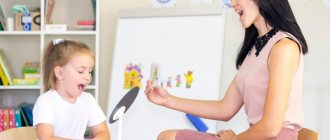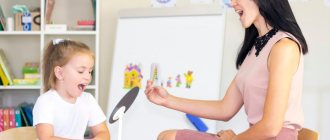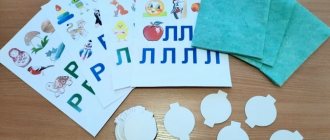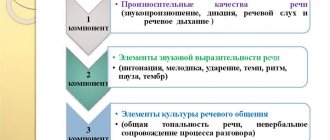Setting the sound Y
One of the most “hotly loved” letters of the Russian alphabet for foreigners is the letter Y. I used quotes for a reason. Those students who take on the phonetics of the Russian language sooner or later encounter sound, and sometimes it seems to them that it is physically impossible to pronounce the sound Y. There have already been a lot of jokes about the letter Y and the difficulty of pronouncing the sound Y. “To make the Y sound, imagine being hit in the stomach” or “What does the Y sound sound like? To the howl of a wounded seal." What's interesting is this. In Russian-speaking society, young children and some adults sometimes have problems pronouncing a number of sounds such as R, L, Ш, Ш (most often consonants and sibilants), but pronunciation ы very rarely causes difficulties. So your emotions are understandable, but in vain. The Russians prove that the articulatory apparatus is capable of pronouncing this nightmare sound, so you will definitely cope with it over time.
Phonetics in general, and the production of difficult sounds in particular, is best practiced with a teacher, “live.” If you can, be sure to spend a couple of hours doing a face-to-face or Skype session. Of course, it is not always possible to find a Russian-speaking interlocutor or teacher, so any consultation will be of help to you. I hope I can help in some way.
So, let's start the fight with the sound Y
The first thing to do is to feel and practice the difference between I and Y. Almost all students who have difficulty with this sound involuntarily pronounce it as I. You probably notice yourself that instead of the word “we” you pronounce “mi”, and instead of “you” - “vi”. If you don't notice, most often it is so. You get I, E and O, and Y “falls” towards one of these sounds.
To turn I into Y, you need to do the following articulatory actions.
Make the sound I. Pull it, feel the position of the tongue. Feel your tongue pressing against your lower teeth and your lips stretching as if in a smile. With pronunciation And everything is fine. Try changing the position of your tongue, slightly easing the pressure on your teeth. Just move your tongue back. You will feel how the sound And disappears, and then any sound disappears at all. The air passes between the expanded space between the palate and the tongue, the sound becomes muffled, the air begins to “whistle”.
This is absolutely normal. Let's move on to the next step.
Say the sound I again. Now move your tongue away from your teeth so that it does not touch them. If it doesn't work, work on it. As you practice, you should keep an eye on two things:
- your lips are still stretched in a smile; - the tongue is in a calm, relaxed position and does not touch the teeth.
Try to keep your jaw slightly tense. Control this tension. Try pronouncing the Y sound. If the sound still sounds like Y, try moving your lower jaw forward just a little. Now that the sound is better, return to the previous expression (lips stretched a little less than when pronouncing the sound I, jaw bite in a natural position) and try to “catch” the sound Y.
Consonants will help you make the Y sound. Best friends - letters K and G.
Try to pronounce the syllables and words: ky-yk-yky-kyky-ykyk-ykyky gy-yg-ygy-gygy-ygygy—gygygy we-soap-soap would-were-you-exit otter-exit-rat-smoke
One more exercise. Repeat the syllables slowly at first, working on the clarity of the sound. Then add speed. Say the last word in the series as clearly and loudly as possible.
you-you-you-you-you-pumpkin ry-ry-ry-ry-ry fish paw-paw-paws
Simple practice with a pencil gives a good effect. Bite the pencil with your teeth and try to pronounce the sound I. The pencil will not allow your tongue to rest on your teeth, and you will not be able to close them, so the sound Y will come out better and better each time. After practicing, try to pronounce the sound Y without a pencil, remembering the articulation.
Experience of a kindergarten speech therapist in learning vowel sounds using hands
Learning vowel sounds with the help of hands
Author: teacher - speech therapist, Svetlana Vyacheslavovna Klokova, MBDOU d/s. No. 39, Arzamas, Nizhny Novgorod region. Description: The author's methodological development for the study of vowel sounds using a number of manual postures (bioenergoplasty) will help in an interesting playful way to develop joint movements of the hands and articulatory apparatus, develop children's speech and mental activity, coordination of movements and fine motor skills. It will be useful for speech therapists, special education teachers, and interested parents. Goal: automation of vowel sounds. Tasks: - automate vowel sounds; — develop articulatory and fine motor skills; - develop speech and thinking activity; - develop coordination of movements; - arouse interest in the activity.
My profession is speech therapist.
Work experience is more than 20 years, in a group with children with general speech underdevelopment - 15 years. Recently, health-saving technologies have become very popular among teachers in their work. This is caused by the annual increase in children with various speech pathologies. Our task is not only to preserve the health of children, but also to take care of their positive development dynamics. Children with any speech impediment, such as phonetic underdevelopment (PH), phonetic-phonemic underdevelopment (FFN), general speech underdevelopment (GSD), especially a complicated dysarthric component, need to begin classes to correct sound pronunciation with articulatory gymnastics. It will help prepare the organs of articulation (tongue, lips, lower jaw, cheeks) for the upcoming work of producing sounds. It will strengthen the muscles or, conversely, relieve excess tension in them. From my many years of work experience, I came to the conclusion that it is necessary to use not just articulatory gymnastics in the work of a speech therapist, but to connect it with synchronous movements of the hands. The posture of the hands, as it were, shows the position of the posture of the articulation exercise. This area of health-saving technology is called “bioenergoplasty”. The interaction of speech and motor activity stimulates the development of areas of the brain responsible for speech, helping to maintain articulatory postures longer and better. Anyone can get acquainted with my articulatory gymnastics using bioenergoplastics on the ped-kopilka website by following the link/blogs/svetlana-vjacheslavovna-klokova/artikuljacionaja-gimnastika-s-primeneniem-bioyenergoplastiki-po-teme-zhivotnye.html. At the same time as articulatory gymnastics, combining movements with hand posture, I begin to study vowel sounds with the children using bioenergoplasty. Now the posture of the hands repeats the posture of the articulated sound. If a child has a complex speech pathology, the speech therapist begins corrective work to correct pronunciation deficiencies by introducing vowel sounds. The vowel sound is the basis of any syllable. Words are made up of syllables. Sentences are made up of words. Our speech consists of sentences. After sounds are practiced and automated in isolation, we learn to recognize sounds by articulatory and manual posture, without sound accompaniment. We learn to remember and pronounce a number of vowel sounds (from two to four). Then we move on to working on simple words. Children pronounce the word clearly, slowly, syllable by syllable, while simultaneously demonstrating the articulation of the vowel sound with a hand pose. I invite everyone to get acquainted with my techniques for studying vowel sounds using bioenergoplastics. “Learning vowel sounds with hands”
SOUND A
I open my mouth, unclench my hands, smooth and beautiful sound,
and I repeat. Orange, bus, angel, stork.
Open your mouth wide. The wide tongue lies flat on the bottom of the mouth, the tip almost touching the lower teeth. The lips are freely parted. Palms are turned away from you.
The fingers are spread apart and tense. SOUND O
I open my mouth, unclench my hands, smoothly and beautifully Sound
O , I repeat. Olya, perch, cloud, autumn, windows.
Open your mouth wide.
The tongue is wide, somewhat pulled back, its back part is slightly raised. The lips are pushed forward roundly. Palms are turned away from you. The fingers are bent into a rounded shape and tense. SOUND U
I repeat
U smoothly and beautifully Beehive, beehive, fishing rod, iron, mustache.
Open our mouth a little.
The tongue is pulled back even more than with o, its tip is moved far away from the lower incisors, and the back of the tongue is significantly raised. The lips are strongly pushed forward. Palms are turned away from you. The fingers are extended forward and tense. The thumb is under all the others. SOUND AND
I open my mouth, unclench my hands, smooth and beautiful sound
And I repeat. Turkey, needle, oriole, donkey, frost.
Open our mouth a little.
The lips are spread far apart and pressed against the teeth. The wide tongue is sharply bulged towards the middle of the palate, forming a gap with it. The palms are turned away from you. The fingers are pressed together and tense. The thumb is on the opposite side of the other SOUND
I open my mouth, unclench my hands, smoothly and beautifully
I repeat Y. Mice, melon, pitchforks, cats, bots, notes.
We open our mouth a little more than for the sound I. The tip of the tongue is pulled back significantly, and the entire tongue, especially its back, is raised to the palate (but does not touch it).
The lips are spread far apart. Palms are turned away from you. The fingers are spread apart and tense. The thumb is on the opposite side from the other SOUND E
I open my mouth, unclench my hands, smoothly and beautifully
I repeat E. Elya, Edik, Emma, floor, whatnot, popsicle.
We open our mouth a little less than for the sound E. The tongue is wide, the tip of the tongue touches the lower teeth, and the middle part is noticeably curved upward. The lips are slightly open and stretched to the sides. Palms are turned towards each other. The fingers are bent into a rounded shape and tense.
We recommend watching:
Synopsis of an integrated educational activity in the senior group “Chest of Health” Interaction between a speech therapist teacher and pre-school specialists Developmental technologies in speech therapy Pedagogical seminar in kindergarten “Health Week”
Similar articles:
In what cases do educational technologies harm the health of students and teachers?
Health-saving technologies for children with disabilities (hearing impairment) in elementary school
Correction of sound pronunciation disorders in dysarthria
When correcting sound pronunciation disorders, the principle of an individual approach is used. It is important to identify the child’s compensatory capabilities, i.e. preserved articulatory movements, sounds, syllables and words that are pronounced correctly. First of all, for correction, those sounds are selected that are closest to the child’s correct pronunciation, or those whose articulatory patterns are the simplest.
A feature of speech therapy work for dysarthria is a significantly longer period of time for practicing each sound and adherence to a certain sequence in working on sounds.
The sequence of work on sounds is determined by the degree of accessibility of sounds for pronunciation (ease of articulation) and the gradual transition from lesser to greater pronunciation difficulties.
Before proceeding with the formation of articulatory praxis at the stages of production, automation and differentiation of sounds, it is necessary to develop or clarify phonemic processes. Before calling and staging sounds, you need to achieve their distinction by ear. When correcting sound pronunciation disorders, the following stages of speech therapy work are distinguished.
1. Development of new pronunciation skills. The speech therapist must model the main articulatory structures (dorsal, cacuminal, alveolar, palatal). Each of these positions determines, respectively, the articulation of whistling, hissing, sonorant and palatal sounds. When the child masters a number of articulatory movements, the speech therapist proceeds to develop a series of sequential movements, performed clearly, exaggeratedly, based on visual, auditory, and kinesthetic control. The sequence of actions and instructions of the speech therapist may be as follows: “Look in the mirror, as I do”; “Look at yourself in the mirror and do the exercise “Fence” (“Tube”, “Shovel”)”; “Look carefully at yourself in the mirror. What position are your lips and tongue in?”; “Do that move again.” This sequence of movements is aimed at the formation of clear kinesthesia and thereby helps to reduce apraxic disorders that occur with dysarthria. Gradually, the child’s articulatory base is prepared to clarify or evoke disturbed sounds.
2. Determining the sequence of speech therapy work to correct sound pronunciation disorders. For dysarthria, depending on the presence of pathological symptoms in articulatory motor skills in children and the degree of its severity, the speech therapist individually determines the sequence of work on sounds. In some cases, you should not adhere to the traditional procedure, which recommends staging with broken whistling sounds. When working to correct sound pronunciation in dysarthria, it is advisable to evoke that group of sounds whose articulatory structure has “ripened” first of all. In many children with speech-motor disorders, the production and further automation of more “complex” sounds, such as hissing or sonorous sounds, are first better achieved. In this case, whistling sounds will be corrected later, after the dorsal position has “matured,” which is often one of the most difficult for children with dysarthria.
3. Staging or stimulating the direct evocation of an isolated sound. This work for dysarthria is carried out in the same way as for any other phonetic disorder, including dyslalia. The speech therapist uses classical methods of producing sounds (by imitation, mechanical, mixed methods). The time and methods of producing sounds are chosen individually. In some cases, it is enough just to “clarify” the sound being processed. One of the methods for producing sounds for dysarthria is the method of phonetic localization. The child evokes an “analog” of sound that does not completely coincide in its acoustic and articulatory characteristics with the standard of correct speech, but at the same time is clearly opposed to all other speech sounds. For a child with a speech-motor disorder, approximate pronunciation of a sound is a certain step on the path to mastering normal articulation. At the same time, mastery of a sound analogue is sufficient for the child to be able to operate with it while working on the development of phonemic concepts and sound analysis skills (G.V. Chirkina).
4. Automation (fixation of the evoked sound) is the most difficult and lengthy stage of speech therapy work for dysarthria. Often in practice, speech therapists are faced with the fact that in isolation children pronounce all sounds correctly, but in the flow of speech the sounds lose their differentiated characteristics and are pronounced distorted. It is necessary to pay careful attention to the automation of sounds in lexical material of varying complexity. First, automation is carried out in syllables of different structures (where all sounds are pronounced exaggerated), then in words of different syllabic structures, where the sound being fixed is in different positions (at the beginning, at the end, in the middle). The sounds are then automatized in sentences rich in the control sound. It is very important that the lexical material excludes sounds that are pronounced distorted by the child or have not yet been fixed. All lexical material proposed for automation must be semantically accessible to the child.
5. Differentiation of the delivered sound in pronunciation with oppositional phonemes. The sequence of presented lexical material is similar to the sequence when automating a given sound. First, 2 syllables are offered (sa-sha, as-ash, sta-shta, tsa-tsha, etc.), then 3 syllables. Then pairs of words are given, different in syllable structure.
6. Development of communication skills. One of the most difficult areas of work is developing self-control skills in a child. Speech therapists are often faced with a situation where a child, when in contact with a speech therapist in an office setting, demonstrates acquired skills in speech. But when the situation changes, in the presence of other people, the skill that seemed strong disappears, the child returns to the previous stereotypical (distorted) pronunciation. To develop communication skills, the child’s active position, his motivation to improve his speech and, of course, long-term speech therapy work are necessary.
It is traditional to introduce sound into speech when memorizing poetry, composing sentences, stories, retelling texts, etc.
Articulation gymnastics
The key to correct articulation of sounds, including vowels, is sufficiently developed mobility and switchability of the organs of the speech apparatus, as well as developed speech breathing. The functioning of the speech organs can be improved through articulatory gymnastics. There are various exercises for the lips, cheeks, lower jaw and tongue. It is good to give tasks in a playful way so that they arouse the child’s interest and desire to repeat them.
Exercise “Garazhik”. Let's imagine that the mouth is a garage into which cars drive. Once - open your mouth wide and hold it in this position for up to 5 seconds, until all the cars start moving. Two - close the garage. The tongue lies quietly at the bottom of the mouth. Repeat at least 3 times.
“Hamster.” The speech therapist shows a picture of a hamster, paying attention to how its cheeks are puffed up. Then he invites the child to puff out his cheeks too. When performing the task, the mouth must be closed. After 5 seconds, you need to release the air through your lips.
If the child does not succeed in this exercise, then you can simply invite him to blow, squeezing his lips with his fingers at this moment, as a result of which the air from inside will inflate his cheeks. Repeat 3 times.
"Puppy". The speech therapist shows a picture of a dog (she bares her teeth) and a boy (he smiles). The teacher draws the child’s attention to how the puppy and boy show their teeth and offers to show their teeth in the same way. The exercise is performed in front of a mirror 2-3 times. You can also read simple, funny poems on the theme of the picture.
Several articulatory gymnastics exercises can be united by a common theme. For example, invite your child to put animals from various exercises on a fun train. We’ll put a hamster in the first trailer (children puff out their cheeks), a puppy in the next one (smile), etc.
Also effective exercises include “Needle”, “Swing”, “Fence”, “Horse”.
Games for the sound [ы] to overcome the underdevelopment of the phonemic aspect of speech in older preschoolers
Publications on the topic:
Formation of the intonation side of speech in preschoolers with general underdevelopment of speech when reading fairy tales Intonation in words is a sea of colors It can express joy, awe, grief Without it, words are empty, even children know Without it we see everything.
Summary of a frontal speech therapy lesson on the development of the phonetic-phonemic aspect of speech in children 5–6 years old. Summary of a frontal speech therapy lesson on the development of the phonetic-phonemic aspect of speech in children 5-6 years old in a compensatory group.
Summary of a speech therapy lesson on the development of the phonetic-phonemic aspect of speech in children of the senior group “Sound [Z]. Letter Z" Correctional educational tasks: Teach children to characterize sound 3 based on acoustic and articulatory features. Introduce.
Abstract of the GCD on the development of the phonetic-phonemic aspect of speech in children of the senior group “Differentiation of sounds [U] - [A]”.
Summary of educational activities on the formation of the phonetic-phonemic aspect of speech in children with physical disabilities of the preparatory group based on speech material Cognitive and speech development. Educational areas. “Communication”: Improving the phonetic-phonemic side.
Summary of educational activities for the development of the phonemic aspect of speech in the senior speech therapy group “Consonant sounds [T]-[T']. Letter T" educational tasks: Clarification of the articulation of sounds [T] and [T']. Formation of skills to distinguish between sounds [Т] and [Т']. Learn to highlight a given one.
Consultation for teachers “Use of a developmental environment as a stimulating factor in overcoming ODD in older preschoolers.” A properly organized subject-spatial developmental environment in a speech therapy group and speech therapist’s office creates opportunities for...
GCD on the formation of the phonetic side of speech in the senior group for children with speech disorder on the Topic: “Sound and the letter Sh” Summary of the GCD in the senior compensating group for children with speech disorder on the formation of the phonetic side of speech. Topic: Sound and letter [Ш] Lesson objectives:.
"Didactic games as a means of speech development in older preschoolers." Work plan for the teacher for self-education Work plan for the self-education of the teacher of senior combined group No. 4 Ivanova A. I. Topic: “Didactic games as a means of development.
A manual for parents “Games for developing the speech of older preschoolers” The methodological manual “Games for developing the speech of older preschoolers” is aimed at helping parents in organizing work with children:





